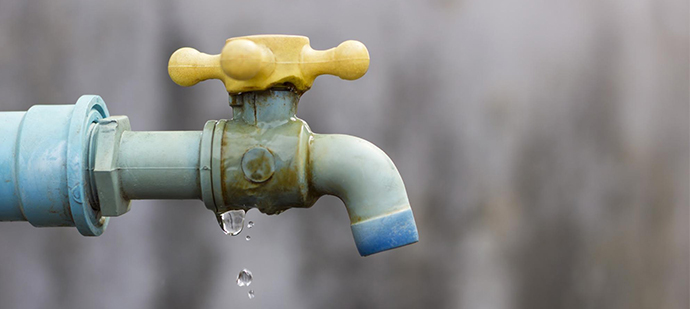6 Ways to Find Concealed Water Leakages in Your House
6 Ways to Find Concealed Water Leakages in Your House
Blog Article
We have found this great article on Finding hidden leaks directly below on the internet and concluded it made perfect sense to share it with you in this article.

Early discovery of dripping water lines can reduce a prospective calamity. Aside from conserving you cash, it will certainly minimize the aggravation as well as disappointment. The moment you find a leak, calling your plumber for repairs is the very best remedy. Some little water leakages might not be visible. Below are some hacks that aid if you can not spot it with your naked eyes.
1. Take A Look At the Water Meter
Examining it is a guaranteed means that helps you uncover leaks. If it relocates, that shows a fast-moving leak. This indicates you may have a slow-moving leak that could even be below ground.
2. Examine Water Usage
Assess your water bills and track your water intake. As the one paying it, you should see if there are any kind of inconsistencies. If you identify sudden changes, in spite of your usage coinciding, it indicates that you have leaks in your plumbing system. Remember, your water costs need to drop under the same range on a monthly basis. An unexpected spike in your expense shows a fast-moving leak.
A consistent boost every month, even with the exact same behaviors, reveals you have a sluggish leak that's also gradually rising. Call a plumber to completely examine your building, especially if you really feel a cozy location on your floor with piping below.
3. Do a Food Coloring Test
When it concerns water consumption, 30% comes from toilets. Test to see if they are running properly. Decline specks of food shade in the container as well as wait 10 minutes. There's a leakage in between the tank as well as dish if the shade somehow infiltrates your dish throughout that time without flushing.
4. Asses Exterior Lines
Don't forget to examine your outside water lines too. Should water permeate out of the link, you have a loosened rubber gasket. One tiny leak can lose tons of water as well as surge your water expense.
5. Examine and also Analyze the Situation
Homeowners must make it a behavior to check under the sink counters and also inside closets for any type of bad odor or mold development. These two red flags suggest a leak so timely focus is needed. Doing regular assessments, even bi-annually, can save you from a significant trouble.
Check for stainings and also weakening as a lot of home appliances and pipes have a life span. If you believe leaking water lines in your plumbing system, do not wait for it to escalate.
Early discovery of dripping water lines can reduce a possible catastrophe. Some tiny water leakages may not be noticeable. Examining it is a surefire method that helps you uncover leakages. One little leakage can throw away tons of water and also surge your water expense.
If you believe leaking water lines in your plumbing system, do not wait for it to intensify.
How to Know If Your Home Has a Hidden Leak
Water Meter Reveals Inexplicable Water Usage
If you’d like to test whether or not there’s a leak somewhere in your home, you can do this using your water meter. Here is how to conduct the test:
Don’t use any water in your home for at least 30 minutes; this also means not turning on faucets or water-using appliances.
Go outside, and check your water meter for activity.
If your water meter shows that there was activity, even though no one was using any water, this proves that there is a leak in your home.Visible Mold or Mildew Growth
Leaks behind walls create moist, dark environments that allow mold and mildew to grow and thrive. Eventually, you might see mold growth forming on the wall closest to a hidden leak.
If mold is growing in an area that receives a high amount of moisture, such as a bathroom, it may simply be an indication that better ventilation is needed. However, if you see mold growth on a wall or the ceiling in an area where you would not expect, you probably have a hidden leak.
Musty, Mildew Odor
Sometimes you might not be able to see the mold or mildew that is growing as a result of a leak. However, the smell can give the problem away just as easily. If you catch a whiff of something musty, there’s a good chance that old water is collecting somewhere in your home that you can’t see.
Stained/Warped Walls, Ceilings, or Floors
When your home soaks up water, a variety of red flags can become visible, including ceiling stains, bubbling drywall, warped walls, and sagging floors. While these issues can be caused by excess humidity, they can also be signs that a pipe or plumbing connection has started leaking behind your walls.
Inexplicably High Water Bill
After a while, you get a general sense for what your water bill should be. If you own a pool or sprinkler system, your bill will tend to be higher during summer. However, if you receive a water bill that seems especially high, and you can’t figure out what caused it, then you may have a hidden leak somewhere that’s increasing your bill.
https://www.plumbingjoint.com/blog/2019/july/how-to-know-if-your-home-has-a-hidden-leak/

We are very intrigued by Locating water leaks and I really hope you liked the entry. In case you appreciated our post plz don't forget to pass it around. Thank-you for going through it.
Report this page